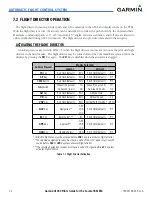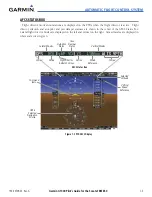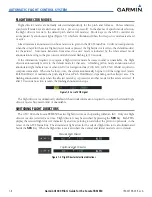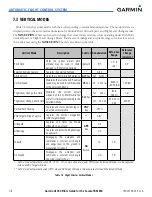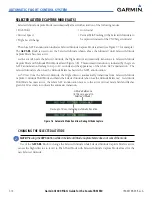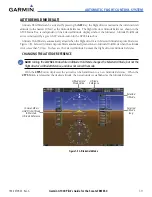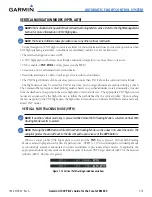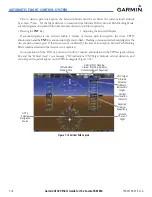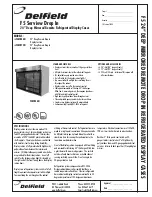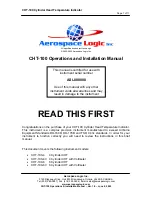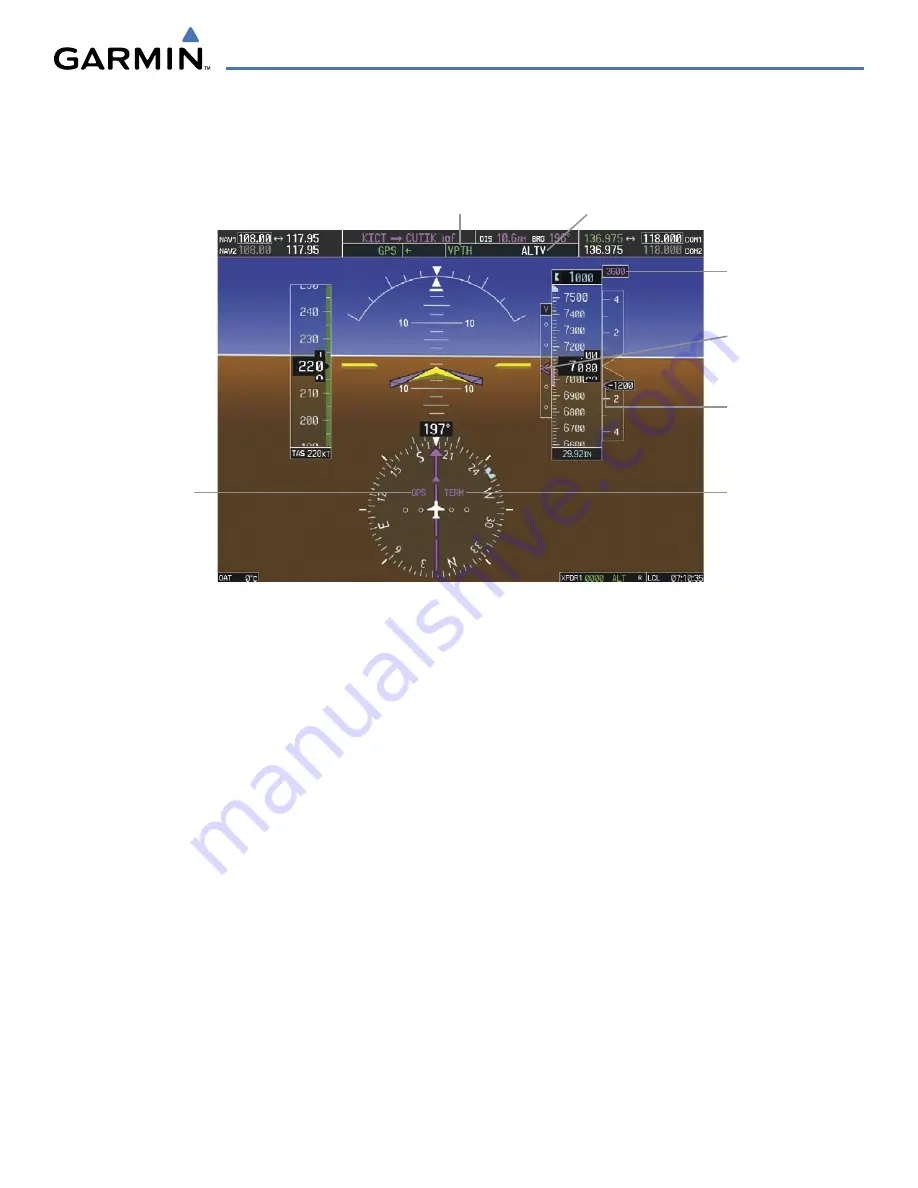
190-00709-00 Rev. A
Garmin G1000 Pilot’s Guide for the Socata TBM 850
7-17
AUTOMATIC FLIGHT CONTROL SYSTEM
When a descent leg is captured (i.e., vertical deviation becomes valid), Vertical Path Tracking becomes
active and tracks the descent profile (Figure 7-15). An altitude capture mode (‘ALTS’ or ‘ALTV’) is armed as
appropriate.
Required
Vertical Speed
Indication (RVSI)
Vertical
Deviation
Indicator (VDI)
VNV Target
Altitude
Terminal
Phase of
Flight
GPS is
Selected
Navigation
Source
Figure 7-15 Vertical Path Tracking Mode
VNV Target Altitude
Capture Armed
Vertical Path
Tracking Active
If the altimeter barometric setting is adjusted while Vertical Path Tracking is active, the flight director
increases/decreases the descent rate by up to 500 fpm to re-establish the aircraft on the descent path (without
commanding a climb). Adjusting the altimeter barometric setting creates discontinuities in VNV vertical
deviation, moving the descent path. For large adjustments, it may take several minutes for the aircraft to re-
establish on the descent path. If the change is made while nearing a waypoint with a VNV Target Altitude,
the aircraft may not re-establish on the descent path in time to meet the vertical constraint.


